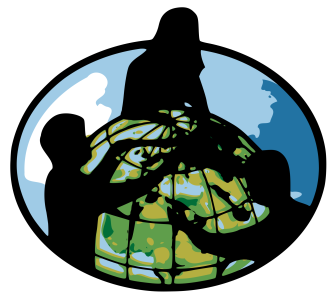It’s been a difficult few weeks in my classroom.
The uncertainty and tenuous nature of the world after the election and in the days since the inauguration have been emotionally taxing. Not just for my students, but for me as a teacher as well. I’ve been doing my best to add some self-care into my regiment (these two articles have been useful: ‘How to #StayOutraged...’ and ‘What to do when you’re overwhelmed...'). While we have been touching on current American politics, it has been difficult to know where to begin some mornings.
The current actions towards Muslim men, women, and children was something I knew needed to be unpacked with my students in-depth. As the child and grandchild of immigrants, the topic hit especially close to home, but I also serve students whose families have dealt with Japanese internment, faced quotas that kept their families divided, have fled dangerous political situations, or struggle consistently with family kept far away while they came for a better life.
So, I took Valencia Clay’s #RefugeesWelcome Lesson Plan and tailored it to my students. Over two days, we discussed the ban’s legality, as well as answered each other’s questions (and discussed the “facts” of the issues).

I’ll leave a quick write-up of my lesson after, but some key takeaways that I wanted to share:
- Students are eager to discuss this topic. We live in a 24-hour news cycle, and students are aware what’s going on. Our classrooms must continue to be a place for students to challenge each other, discuss opinions, and share their concerns in a safe space.
- Set norms early. I teach at a small school with a strong culture, but this lesson could easily have gotten overly divisive and unhelpful given the topic. Ms. Clay’s lesson, linked above, has an excellent dialogue resource.
- Students have a lot of questions and access to information—factual and otherwise. This lesson was an excellent tie-in to discussing how to tell fake news from real news, and students needed the support to be able to ask useful questions of each other and critically question their own biases. It also helps to ask students, “Where did you hear that from?” when they make comments that seem, perhaps, based on alternative facts.
- Get lots of resources, uplift the voices of people most affected. I wish I had incorporated more first-hand resources or stories of Muslim immigrants and refugees affected by then ban in this lesson. It is critical not just to teach students to use first-hand sources, but also to help them build empathy (a lack of which, I feel, is what nationally has led us here in the first place). Please check out Rusul Alrubail’s resource guide for amazing lessons.
I’ve been struggling with what to even say in these current times. Everything that comes to mind feels either like it’s too little, or it’s been said. I don’t know what poetics I can leave anyone with to move us forward.
Here’s what I will say: We have two real jobs as teachers. Our jobs boil down to these things: First, to create a space of safety, validation, and ultimately love for our students; and second, to teach them how to critically question power, advocate for themselves and others, and resist oppression. This is how we move society forward. This is how we make things better for them—by giving them the tools to do so. We have seen some of these events happen before. As a student pointed out, in all-caps, we must learn from our history.

Now is the time to get to work. Now is the time to give love through action. Now is the time to teach.
Lesson Write Up (modified from Valencia Clay):
Prior: break students into groups of 4 or less if possible.
Journal Freewrite: Ask students to free write for 5 minutes. “How do you feel about the current state of politics? AND/OR respond to the following quote: “In a time of universal deceit, telling the truth is a revolutionary act.” -George Orwell
Gallery Walk: Set up these 9 images with post-it notes. Instruct students to silently add their thoughts in bullet point form. They will have 90 seconds with each image, and they may respond to other comments. After, have them walk through the images one final time to read comments.
Gallery Walk Reflection: Ask students to write a 2-3 sentence reflection about their feelings and thoughts about the ban after the gallery walk.
Jigsaw Close Read: Share the following 5 articles with students:
Article A: NPR (focus on annotations) Article B: NYTimes Article C: The Atlantic Article D: NYTimes Article E (anyone can read): The Guardian
Ask them to answer the following questions (my students do so on Google Classroom).
1. Please give a 2-3 sentence summary of your article 2. What feelings did the article you read bring up for you? Why? (2-3 sentences) 3. Do you think that it is important to choose a side in these discussions? Why or why not? (1-2 sentences) 4. How do you feel about the current ban on Muslim immigrants and refugees? (2+ sentences)
Discussion: Give students time to discuss as a table, and ask them to share their responses with the class (I did this with Google Slides, students discussed and wrote 2-3 bullet points summarizing their discussion).
Finally, have students continue to discuss whole class, OR continue with an online discussion (I use Google Classroom for this)

Thoughts, feedback, questions, comments? Please reach out in the comments or directly to me. I’d love to hear!


